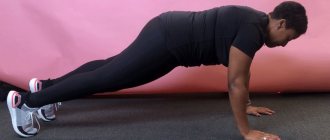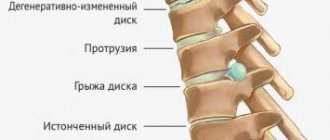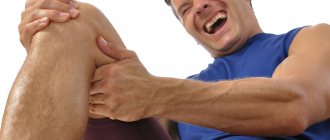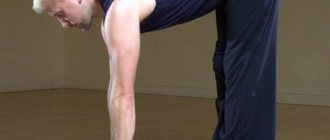What to do if your right or left side hurts while running
Many beginning runners become very afraid if their right or left side starts to hurt while running. Most often, out of fear, they take a step or stop altogether, so as not to aggravate the problem.
In fact, in most cases, pain in the sides while running does not cause anything detrimental to the body. You just need to know where it comes from and how to get rid of it.
If your right side hurts, it’s your liver that hurts. If the left one is the spleen.
When the body begins active physical work, the heart beats faster and pumps more blood than in a calm state.
But both the spleen and liver may not be ready for the fact that a very large amount of blood will flow to them. It turns out that they will receive more than they give.
As a result, there will be a lot of blood inside these organs, which will put pressure on the walls of the spleen or liver. And these walls have nerve endings that react to pressure.
Accordingly, the pain we feel in the sides while running is caused by excessive blood pressure on the walls of the organs.
What to do to relieve pain in the sides.
If pain appears, then it is better to get rid of it. Honestly, nothing will happen to you if you continue to run with this pain. It’s just that not everyone has the patience, and there’s no point in being patient, because there are quite effective methods that almost always help.
Massage
I don’t mean you need to stop and give yourself a massage. You can do a massage while running. It is needed to artificially disperse blood from the liver or spleen.
There are two ways to do this:
First. Take deep breaths and exhales, trying to work your abdominal muscles. This will help relieve pain and saturate the body with oxygen.
Second. Without taking deep breaths, begin to suck in and inflate your stomach.
Slow down your running pace
Attention!
The massage does not take long. If you understand that it doesn’t help, then your running pace is chosen so high that the spleen and liver are working at their maximum capacity and cannot pump blood faster. So try slowing down your running pace a little. This helps in 90% of cases. Slow down until the pain goes away.
If this doesn’t help, and you don’t have the strength to endure the pain, then move on to a step. And if your pain is not associated with any chronic diseases of the internal organs, then your sides will stop hurting in a few minutes. Although sometimes you have to endure the pain for 10-15 minutes after stopping.
How to prevent side pain
It is better that this pain does not appear at all. There are several ways to do this that usually help. The word “usually” means that almost always, but there are exceptions.
Warm up before running . If you warm up your body well before running, then pain may not occur, since both the spleen and liver will be ready for the increased load and will be able to pump the required volume of blood.
It doesn’t always help, because sometimes the running pace significantly exceeds the intensity of the warm-up. For example, during warm-up your heart rate will increase to 150 beats, and while running to 180.
It is clear that this is an additional load that internal organs may also not be able to withstand.
at least 2 hours before training . This is of course a universal number. It may vary depending on the food. But on average you need to take exactly 2 hours. If you can’t eat in advance, then half an hour before your run you can drink a glass of very sweet tea or tea with a spoon of honey. This will give energy.
But if you eat buns or porridge right before training, your body will spend energy and strength on digesting them, and your sides may also get sore due to the fact that they simply won’t have enough strength to handle both the load from running and the load from digesting food.
Therefore, respect your body and do not force it to digest while running.
Source: https://scfoton.ru/chto-delat-esli-zabolel-pravyj-ili-levyj-bok-vo-vremya-bega
Who bites us on the liver?
Do you remember this feeling familiar from childhood, when when running you start to feel an unbearable stabbing in your right side? In such cases, it is sometimes recommended to press the painful area with your fingers. Is this harmful and is it possible to continue running after this feeling appears?
Acute painful liver syndrome
Acute painful liver syndrome (this is the scientific name for this condition) most often develops during fast running shortly after the start. In sports medicine, there are two main reasons for the development of acute painful liver syndrome: disorders of the hepatic circulation and the outflow of bile from the liver.
Causes
In the first case, as a result of intense activity, the blood flow in the working muscles of the legs and the volume of outflowing venous blood in the inferior vena cava passing through the liver sharply increase.
The outflow of blood from this organ to the heart is mechanically disrupted. This leads to an increase in liver volume and pressure on the hepatic capsule, in which pain receptors are located.
Figuratively speaking, the liver “swells,” which is the cause of pain in the right hypochondrium.
The second reason for the development of a painful attack is associated with a violation of the outflow of bile through the hepatic ducts. The importance of this factor increases with biliary dyskinesia. This disease is associated with a change in the tone of the walls of the bile ducts, which makes it difficult for the outflow of bile.
Inflammation of the gallbladder, located under the liver, can also cause pain in the right hypochondrium, but the nature of the pain with cholecystitis will be different.
Such pain is not necessarily associated with physical activity and usually appears with a certain frequency (if we are talking about a chronic process).
Thus, if an attack of pain in the right hypochondrium begins not only during running, but also at rest, including after eating, it makes sense to consult a doctor and exclude (or confirm) the diagnosis of biliary dyskinesia or cholecystitis. If this condition occurs exclusively during physical activity, from time to time, then it is usually explained by errors in training. Let's figure out why this happens.
Not sporty
Manifestations of acute painful liver syndrome are the result of a specific physiological reaction of the body to the transition from relative rest to intense physical work, which in sports medicine is called “working in”. The processes of unfolding the functions of respiration, blood circulation and energy exchange occur.
For example, your resting heart rate is 70 beats per minute, and while running fast it’s 170 beats per minute. The respiratory rate, respectively, is 12 and 30-50 breaths per minute, etc.
In order for these indicators to reach the required level, a certain time is required, on average 3-5 minutes. But it takes seconds, not minutes, to get the motor system working.
For example, it takes only 5 seconds for a runner to reach maximum speed: in sprinting, maximum speed is achieved in 3.5-4 seconds - somewhere from the 35th meter of a 100-meter race.
"Dead Point" and "Second Wind"
Such a discrepancy in the functioning of the body's systems causes dissonance: the muscles are already working at full capacity, but there is not enough oxygen for their work. It is during this period that the so-called “dead point” occurs - a feeling of heaviness and lack of air, a desire to stop running.
If this state is overcome, then in a few minutes the process of working in will be completed and the “dead point” will be overcome - this is the “second wind”. By the way, a “dead point” is observed not only when you start running too quickly, but also when you are insufficiently trained.
So, with the development of painful liver syndrome at the beginning of a fast run, the blood circulation of the liver does not correspond to the general blood flow, which causes pain.
What should runners do to avoid its occurrence? First of all, spend more time warming up before running - then the process of developing the respiratory and circulatory systems will be painless.
The essence of this warm-up is to gradually increase the intensity of work of various muscle groups that consume the largest amount of oxygen, primarily the leg muscles.
If, despite the warm-up, acute pain in the liver area still appears, it is necessary to reduce your running speed. If this turns out to be insufficient, then you need to switch to walking.
Breath
The next technique to relieve a pain attack is to perform several cycles of abdominal breathing.
It is necessary to take a deep breath with the participation of the muscles of the anterior abdominal wall (if done correctly, the stomach increases in volume), then exhale - the stomach is drawn in as deeply as possible.
This exercise produces a kind of massage of the liver - when the abdomen is pulled in, the diaphragm presses this organ to the spine and squeezes blood out of it.
After 3-4 such breathing cycles, you need to rest for 30-60 seconds and repeat the exercise several times. Usually these measures (switching to walking and abdominal breathing) are enough to relieve a pain attack.
The advice to press on the liver with your fingers is based on approximately the same principle, but this must be done at rest, and the effect of such an “external massage” is inferior to that of breathing exercises.
Go for a run!
If you have ever felt a stabbing pain in your liver during exercise in the gym, do not rush to scold the trainer: eating shortly before the start can also trigger a painful attack. Pay more attention to the composition of your breakfast before your morning jog - at the same time, this will help avoid heaviness in the stomach during physical activity.
It is useful for untrained people to start running training... with walking. Later, alternate walking with running. And then move on to one run.
So, if you are running or have just decided to start, firstly, you need to do a full warm-up before running, secondly, start intense exercise gradually, thirdly, do not forget about moderation in food and, fourthly, do not exceed the optimal running speed corresponding to the current state of fitness. If you follow these simple conditions, running (which, as you know, trains all muscle groups at once) will become your favorite sports exercise.
Olga Darsavelidze
Source: https://newslab.ru/article/357511
Side pain when running
Beginning runners often feel pain in the side, which occurs when carrying out this health procedure.
However, there may be several main reasons for this phenomenon.
- In particular, they include excessive load, especially after a poor warm-up, and insufficient endurance of a novice athlete.
- Proper breathing while running is important; if it is frequent, irregular and shallow, it can cause pain.
- Excessive or recently consumed breakfast, as well as chronic diseases of the pancreas, as well as the gallbladder and liver, contribute to the occurrence of such pain.
Depending on the cause, the pain can have a different nature and location.
On the subject: How not to pump up your calves when running
Does it hurt on the right or left side?
If, for example, the cause of discomfort is poor warm-up, increased load and insufficient level of endurance, then it should be remembered that the volume of blood at rest circulating in the body is no more than seventy percent of the total blood volume, and the rest resides in various tissues and organs , in particular in the spleen.
However, with a sharp increase in load, the body forces reserve blood to quickly enter the blood circulation, and at the same time the liver increases in volume and puts pressure on the hepatic capsule, in which there is a large number of nerve endings that respond with pain in the right hypochondrium, hepatic pain occurs syndrome.
Attention!
This condition is not uncommon for healthy, non-smoking, but untrained people. Almost everyone has either felt or observed from the side a similar phenomenon during school races, when after the first lap of the stadium many girls grab their right side.
In some cases, pain occurs in the left side when the spleen reacts to a sharp increase in blood volume.
How to prevent side pain?
To prevent this kind of unpleasant sensation, you should definitely warm up before jogging, this allows you to gradually “warm up” the body. At the same time, blood flow increases and muscles, including internal organs, are prepared for the load. Refusal to warm up leads to a sharp release of blood into the vascular bed, which leads to pain.
It is necessary to start training with light loads of short duration, for example, the first running workouts may not exceed a quarter of an hour, this should be enough. Regular training will significantly increase your endurance, and side pain will disappear.
If pain does occur, slow down the pace or take a step. Under no circumstances should you stop suddenly. Next, you should relax your shoulders and arms, perform several bends of the body, accompanying them with deep breathing. Applying finger pressure several times to the area of pain may relieve the pain.
However, incorrect breathing can also cause pain in the side when running. When there is insufficient oxygen supply to the diaphragmatic muscle, a spasm occurs and pain begins to be felt in the upper abdomen.
How to breathe correctly when running?
Shallow and frequent breathing, in which the movements of the diaphragm are very small, leads to a decrease in blood flow to the heart, blood stagnates in the liver, causing an increase in its volume. Hence the pain in the right side for the same reason - pressure on the liver capsule of the overcrowded organ.
You should breathe evenly and in sequence. Two steps - inhale, two steps - exhale.
However, this indicator is very individual; some people find it more comfortable to inhale and exhale every four steps; in addition, the pace of running must also be taken into account here. Inhale through the nose and exhale through the mouth.
Important!
To relieve pain after a spasm of the diaphragm, you need to take a deeper breath, then fold your lips into a tube and exhale as slowly as possible.
Do not exercise immediately after eating, when the body devotes all its energy to digesting food. All organs are expanded and loaded, and the heavier the food, the more work is done on the gastrointestinal tract. If you additionally load the body with running, this will cause additional blood flow, and the volume of the organ will increase even more, which will lead to pain in the right side.
The race should begin no earlier than forty minutes after a regular breakfast and an hour and a half after a hearty breakfast. Knowing about the upcoming training, try to limit yourself to light food, these are fermented milk products, boiled rice, light salads, cereal porridges.
In case of existing chronic diseases of the gallbladder, liver, pancreas, the training regimen should be agreed with the attending physician.
Source: https://nmedicine.net/bol-v-bokax-pri-bege/
What to do if you have pain in your right side
As you can see, side pain can be a symptom of a variety of health problems. Therefore, you should not ignore it - be sure to see a doctor. “The severity of the disease that caused the situation cannot always be determined by the nature of the pain syndrome. This applies, first of all, to older people and patients suffering from diabetes - serious diseases of the abdominal cavity can be erased (the pain syndrome may not be expressed at all or disappear completely), says Bulat Yunusov. — Thus, if abdominal pain does not go away within several hours and is accompanied by an increase in body temperature, nausea, vomiting, loss of appetite, stool disorders (constipation or diarrhea), discomfort when urinating, a decrease in blood pressure, then the only correct solution is an in-person consultation doctor."
Can you take medications if you have severe pain in your right side ? Yes, but with caution. “You should not resort to taking analgesics on your own, as this can “blur” the clinical picture of the disease, which will lead to a delay in making the correct diagnosis,” says Bulat Yunusov. “The only thing is that you can take antispasmodics (for example, no-shpa): these drugs relieve spasms of the muscles of internal organs and are aimed at eliminating the cause of the pain syndrome; for inflammatory diseases, they, as a rule, do not provide an analgesic effect.”
In general, doctors have a negative attitude towards self-medication. “At home, it is impossible to guarantee pain relief without harm to the body as a whole. You can dull the feeling of discomfort, thereby easing your suffering only for a while, says Anton Loboda. - In addition, by self-medicating, completely unintentionally, you can cripple some other organ that initially had nothing to do with the pain in the right side. Treatment at home is not a safe solution to the problem.”
The best way out is to make an appointment with a general practitioner and discuss your condition with him. Sometimes a problem can be solved remotely. “It is possible to understand conditions that are accompanied by a wave-like course with dull pain for a long time, even with a remote consultation,” sums up Bulat Yunusov.
Why does my right side hurt when running? Run Studio Running School
Side pain is familiar to all beginning runners. It's hard to ignore it. A natural question arises about its causes and how it can be avoided. Let's figure it out.
Why does pain occur when running?
Depending on the location, nature and conditions of occurrence, a number of main reasons can be identified:
- Poor physical fitness and insufficient endurance. That is why it is mainly beginners who experience pain.
- Poorly done warm-up. A sharp increase in load provokes increased blood flow to the internal organs. Having increased in volume, the liver begins to put pressure on the liver capsule, which has a large number of nerve endings. As a result, pain occurs or, as doctors call it, “hepatic pain syndrome.”
- Breakfast too heavy or recent. After eating food, the body's forces are concentrated on its active digestion. The stomach and liver are involved in the process. The gastrointestinal tract works in enhanced mode. Running promotes additional blood flow, enlarging the organ even more. The result is pain in the side.
- Shallow and frequent, irregular breathing. In this case, the amplitude of the diaphragm decreases, as does the amount of oxygen supplied. Spasm and pain occur.
- Chronic diseases of the gallbladder, liver, pancreas. Previous causes of pain related to healthy, untrained people. Diseases contribute to the enlargement of organs with additional stress and the appearance of pain.
What to do to prevent side pain when running
In order to avoid pain while running, you should remember the following important rules:
- A warm-up is a must before jogging. Its goal is to warm up the body, improve blood flow and prepare the circulatory system for a sharp release of blood. Sports loads should only be gradual.
- You should breathe evenly at the pace that is most comfortable. For pain caused by diaphragm spasm, you need to take as deep a breath as possible and exhale through pursed lips. If necessary, the exercise is repeated several times.
- If exercising on an empty stomach is not possible, then you can run no earlier than 30-40 minutes after a heavy meal. You should avoid eating fatty, spicy, smoked and fried foods. It is preferable to limit yourself to salad, porridge or any fermented milk product.
- Before you start running, you should consult your doctor. This is especially true for those who have chronic diseases.
On topic: How many minutes should you start running?
To reduce pain, you should relax the muscles of your shoulders and arms and change the rhythm of your breathing, inhaling through your nose and exhaling through your mouth. Using three fingers, you need to press several times on the most painful place for seven seconds. And under no circumstances should you stop or sit down. It's better to slow down or take a step.
When preparing for running, you should adjust your diet and sleep patterns, work and rest. Smoking and alcohol are incompatible with a healthy lifestyle. You should not start jogging when you are tired, stressed or sleepy. Morning running should begin no earlier than 40 minutes after waking up.
Source: https://live-excellent.ru/lechenie-podzheludochnoj/podzheludochnaya-zheleza-lechenie-diabeta/16154-pochemu-bolit-pravyj-bok-pri-bege-shkola-bega-run-studio
The right side hurts when walking, how to help and alleviate the condition
Many types of physical pain can occur due to natural processes that occur in the human body.
This may be pain during menstruation, due to improper movements, in adolescence during skeletal development, and other types.
In this article, we will look at the main reasons why the right side (side) begins to hurt when walking; this is considered a fairly common complaint when visiting a doctor.
Causes
Examination and timely diagnosis of the patient will help determine the nature and origin of pain in the right side. In this case, the reasons can be both physiological and pathological.
Physiological reasons for this phenomenon may include:
- The initial period of the menstrual cycle in women, when the endometrium of the uterus is rejected, numerous small vessels are damaged and uterine bleeding occurs. All these processes can cause pain in the side in many women.
- One of the reasons for pain in the right side may be fecal impaction, which is a consequence of an improper diet - on the go and dry. As a result, the colon can accumulate unprocessed foods that put pressure on the diaphragm, the main muscle in the body. This in turn leads to a lack of oxygen in the organs, problems in which cause pain in the side when walking or running.
- Pain in the right side can occur during pregnancy; it is a consequence of the enlargement of the uterus and pressure on the internal organs located on the right side, such as the liver.
- Shingles can be considered one of the causes of pain in the right side. This infection affects the nerve endings, which causes discomfort in the hypochondrium. A characteristic sign of this pathology is rashes in the form of blisters on the skin.
- Diseases of the musculoskeletal system, including arthrosis, osteochondrosis, hernias and others.
- Exercise, including walking and running, can also cause side pain. This phenomenon especially often occurs when enough time has not passed between meals and exercise, so it is necessary to maintain an interval of 3-4 hours between them. In any case, pain in the right side should not be ignored and at the first symptoms you should consult a doctor.
Pathological causes of pain in the right side are a painful deviation from the normal state or process of development of the body. They can be some diseases:
- Diseases of the pancreas, such as early stage pancreatitis.
- Inflammatory processes in the peritoneal area, while the intensity of pain may vary depending on changes in body position.
- Umbilical colic, which can occur during or after eating.
- Diseases of the gastrointestinal tract. In particular, gastritis may also be accompanied by stool disturbances and loss of appetite, and with a stomach ulcer, constipation or vomiting may occur.
- Diseases of the biliary tract, which also cause pain in the hypochondrium or scapula.
- Infectious kidney diseases, in which the temperature may rise, often cause thirst and vomiting.
Nature of pain
It should be noted that the pain that occurs in the right side when walking is not always of the same nature. It can have different localization and even be different in intensity.
REFERENCE! Most often, pain is localized in the part of the body where the diseased organ is located. For example, pain in the upper region of the right side signals diseases of the kidneys, gastrointestinal tract, appendicitis, myocardial infarction and others.
If pain occurs in the central part, then this may indicate intestinal volvulus. Lower localization of pain may indicate diseases of the genitourinary system.
The nature of the pain in the right side can be:
- Dull, which may indicate the presence of chronic diseases of the abdominal organs.
- Cramping, which can signal intestinal dysfunction.
- Aching, which is a consequence of chronic inflammation of internal organs, for example, cholecystitis or colitis.
- Pulsating, which signals inflammatory processes in the intestines or genitals in women. Such pain may be a sign of an ectopic pregnancy, so you should pay more attention to it.
- Acute or burning, which may indicate serious disturbances in the functioning of the body and require calling an ambulance.
How to behave if your right side hurts?
If your right side hurts when walking, you should stop, pull in your stomach to increase muscle tone, and then take a strong breath and exhale through your nose.
This will help temporarily relieve pain and eliminate discomfort.
ATTENTION! If you have prolonged pain in the right side, you should not endure it, but you should consult a therapist, because it can be a symptom of serious disorders in the functioning of the body.
You should not take any painkillers if the cause of pain in the right side is unclear. Only a doctor will be able to prescribe the appropriate tests or treatment and refer you for consultation to a specialist, for example a neurologist, urologist, gynecologist, cardiologist, etc.
What role does nutrition play?
In the lower right part of the human abdomen there are some organs of the digestive system, partly the small and large intestines. They play an important role in digestion, so pain in this area signals problems or eating disorders .
Unpleasant sensations in the right side can occur due to fasting, overeating, unbalanced nutrition, abuse of carbohydrates, alcohol and other foods. Such a diet can cause intestinal irritation, disruption of normal microflora, as well as disruption of intestinal motor functions.
IMPORTANT! If pain in the intestines is observed immediately after eating, then this may be a symptom of a disease, such as colitis or irritable bowel syndrome.
Doctors' advice
When your side hurts when walking, to prevent or neutralize pain in the right side, doctors recommend:
- Do not drink too much liquid.
- Do not abuse alcohol and fatty foods.
- Evenly distribute the load on the body when moving.
- Exercise only 3 hours after eating.
- Don't make too sudden movements.
Conclusion
Any manifestation of pain is a sign of some kind of disturbance in the functioning of the body, so it is worth treating it with attention and not missing the development of a serious disease. For constant and periodic pain in the right side, consultation with a specialist is necessary , while self-medication and postponing the problem for later can lead to disastrous consequences.
Source: https://mybegom.com/hotba/pri-hodbe-bolit-pravyj-bok.html
Why does my right side hurt when running?
Many people began to strive to lead a healthy lifestyle and play sports. This is very commendable. One of the available sports activities is running - it is both free and useful.
Running increases the tone of the body and activates all processes. Regular jogging normalizes sleep, improves mood, and increases performance levels.
But not everyone enjoys running. Sometimes pain occurs, which hinders and frightens novice athletes.
The most common problem among new runners is pain in the right side.
Causes of pain in the right side
- Warm up. You don’t need to immediately run as enthusiastically as you can without warming up. The body does not have time to adapt, as a result, the blood enters active circulation - there is a lot of it in one place, too little in another. The liver enlarges due to blood overflow, as a result we feel pain in the right hypochondrium. Warm-up prepares the body for intense exercise. There is a redistribution of blood flows. It is necessary to devote enough time to warm up each time, at least 25 minutes.
- Incorrect breathing. Another cause of pain is breathing.
Proper breathing is an integral part of a good run. Incorrect breathing again leads to an enlargement of the liver due to its overflow with blood, and again unpleasant pain occurs in the right hypochondrium. During running, the need for oxygen increases. Required: inhale through the nose and exhale through the mouth. Take a deep breath and exhale slowly. Experienced athletes recommend inhaling and exhaling every 2-3 steps. If you feel pain in your side, you should slow down.
- Eating large amounts of food . There is no need to eat fatty, fried, heavy foods before training. The body will need approximately one to two hours to digest. The liver is an organ involved in the digestion process, it removes toxins. In addition to the already heavy load on the organs, physical activity is also added.
- Real diseases of internal organs. Previously, the causes of pain in healthy people were considered. But this may be the cause of some internal diseases, such as cholelithiasis, hepatitis, pancreatitis, etc. You should not guess, if the pain bothers you even at rest, but only intensifies when running, you need to consult a doctor.
Drawing conclusions
- Before deciding to go in for sports, you need to consult a doctor: are there any contraindications and what are the risks? They may offer another alternative to running that is suitable for health reasons. If completely contraindicated, running can be replaced by long walking.
- Be sure to warm up. Spending a little time will prevent discomfort in the side.
- You cannot run immediately after a hearty breakfast (dinner). Ideally, eat something light and avoid fried and fatty foods.
- Learn to breathe correctly.
If you follow all the points, then there will be no problems when jogging; over time, the body will adapt and it will be much easier for it to cope with the load.
Knowing the benefits of running and with the right approach to it, you can improve your health and well-being, without unpleasant pain in your right side.
Source: https://pocemu.ru/bolit-pri-bege-pravyj-bok.html
How to run correctly so as not to get sick
- Before running, you definitely need to develop your diaphragm by drawing in and inflating your stomach . Take a few deep breaths.
- You need to run smoothly, do not stomp, shift the center of gravity forward. You can sway slightly. When running, it is necessary to maintain uniformity of both breathing and the rhythm of steps.
This does not mean that you need to breathe slowly, no, the main thing is that the breaths are taken at approximately the same frequency and with approximately the same amount of air .
- In addition, you need to slow down the pace of your workout or stop altogether, exhale slowly and gradually and calm your breathing, while placing your hand on the site of pain and lightly massaging the muscles .
- If possible, bend over and touch your toes and stand in this position for a few seconds. Then straighten up and stretch up, as if trying to “touch the sky” with your fingers, while inhaling, then lower your hands again and reach down to your feet as you exhale.
- Drink some water.
There is another interesting point in international studies of sports medicine. It turned out that pain most often occurs on the side of the leg on which you land when exhaling . For example, if you exhale, landing on your right leg, the pain occurs in the right hypochondrium, and if you exhale on the left, then in the left.
Therefore, try to practice synchronizing your exhalation with landing on the opposite leg, this usually helps eliminate attacks of lateral cramp.
If it is truly a normal sports cramp, the pain will go away quickly. But you need to remember about some serious diseases that can masquerade as this symptom:
- If pain in the left hypochondrium, despite all the measures taken, persists and spreads along the left arm and shoulder, this may be a symptom of hidden angina .
- Persistent or increasing pain in the right hypochondrium or right iliac region is a sign of appendicitis .
- If the pain arose in the side, but began to radiate to the groin and back, it is quite possible that renal colic .
- If pain becomes more frequent during training and begins to appear at rest, this is a reason to consult a doctor, just as in all the situations described above, do not neglect this advice!
Why does my right side hurt when running?
There are many reasons for pain in the side while running, but for the most part it all depends on the state of health of the person himself.
Depending on the severity of the pain and its location, there are a couple of main circumstances:
1) Incorrect breathing rate
One of the main aspects when running is breathing. With proper breathing, an athlete can run enormous distances and not feel tired; if not, he can become tired almost immediately after the start. The main causes of pain due to improper breathing are: excessively frequent breathing, lack of a normal breathing rhythm (quite often confused), breathing incompletely.
As a consequence of this, two types of pain appear: muscle spasm and pain in the liver. The spasm occurs due to an insufficient amount of oxygen entering the diaphragm, and therefore the muscle is not able to work normally, and the pain appears due to the fact that the blood flow to the heart is significantly reduced (as a result of constant breathing problems) and it stagnates in the liver.
2) Late eating or overeating
If you ate one and a half to two hours (or less) before the run, or consumed too much food, then pain in the side is guaranteed. Since at the end of a meal the body spends a lot of energy on digesting it, the stomach volume increases and the liver vessels increase. This gives us the answer to the question: Why does it hurt on the right side?
3) Anatomical and physiological features
Pain is expected due to:
Poor warm-up (or lack thereof), too sudden and intense load, low level of preparedness and endurance.
In a state of calm, the blood is evenly distributed throughout the body and circulates normally; with a sudden load, the circulation is disrupted and the liver begins to enlarge, pressing on the accompanying nerve endings.
The spleen can also react, which in addition leads to a tingling sensation in the side, this gives us the answer to the question of why the left side hurts.
4) Pathological and chronic diseases
They make themselves felt not only during a run, but also during most physical activities.
If you are also worried about pain that is not severe, almost imperceptible in one or another internal organ, then you can be sure that during the run it can only intensify, regardless of its nature or symptoms. In most diseases, the organ is deformed, it can be enlarged or reduced, and it is precisely because of this that the pain itself appears as the blood flow to it increases and this leads to excessive spasm and pressure.
What to do if your side hurts while running
- Slow down your running pace and relax the muscles in your arms and shoulders. This will reduce and stabilize the flow of blood.
- Change your breathing rhythm. Since blood circulation is dependent on breathing, to normalize it it is necessary to breathe slowly and evenly, without jerking. (For example, two or four steps inhale and two or four steps exhale.
- Inhale through your nose and exhale through your mouth. This will give better absorption of oxygen by cells.
- Press with three fingers on the place of greatest pain and hold for five to seven seconds, three to five times.
- Don't stop for anything, it will only make the pain worse.
In addition, when jogging, you need to pay attention to your work and rest schedule, sleep and diet. Jogging is not a strength training, you do not need to run until you are completely tired, this will only exhaust you and will not bring any health benefits.
Before starting, you should not feel tired, drowsy or stressed. Under such conditions, at the end of the run these sensations will only intensify. If you run in the morning, then you need to remember that you can start running no earlier than 30-40 minutes.
at the end of sleep, if you start running earlier, it will lead to stress for the whole body and will lead to a failure of metabolic processes. If you run in the evening, then after the last physical activity, work or study, at least two or three hours should pass so that there is no overwork and muscle hypertrophy.
Warming up before running is mandatory. First of all, it is required to avoid injuries (such as sprains, spasms, snags, etc.). Before running, you need to warm up all the muscles that will be used in the future, and stimulate your central nervous system to take active action.
If the purpose of your runs is to build endurance, then you need to follow a few simple recommendations. For example: run at a variable pace (10 minutes. Faster than 10 minutes.
Slower), develop constant calm breathing (inhale four steps, exhale four steps), and run for as long a distance as possible).
This will help you quickly and effectively achieve your desired level of endurance.
Advice!
If you run to lose weight or just to get healthy, then everything is quite simple. Jogging should be regular, take place in conscious air, it is recommended to run around the stadium and in some terrain (forest, park, etc.), and bring you pleasure and not pain and stress.
Running is a good option for improving your health and maintaining physical fitness; it has a positive effect on all metabolic processes in the body and blood circulation, develops the heart muscle and respiratory system, strengthens the immune system and strengthens you.
Source: https://citytile.ru/life/pochemu-bolit-pravyj-bok-pri-bege.html
Health problems
If you prepare incorrectly or run incorrectly, health problems can arise. If the left side hurts, then the pain is localized in the spleen, if the right side hurts, it is in the liver.
As a result, the organs become filled with blood and increase in size. Due to the pain receptors located in the capsules, an unpleasant sensation begins to arise.
Pain in the left side may indicate congenital diseases of the spleen. After blood flow enters the organ, a person feels severe acute pain in the lower abdomen.
Such pathologies are most often found in the female half of the population. Complications can also cause abscesses, cyst formation, atrophy and excessive increase in size of the organ. While running with pain, a heart attack or volvulus of the spleen may occur.
In the right side, pain can be localized in people suffering from hepatitis. Such patients have an enlarged liver. Health problems may occur in people with gallstone disease.
The gallbladder in such people is enlarged. Stones begin to clog the ducts, and the bile becomes viscous. Running provokes acute pain. People with an inflamed pancreas should avoid running. Otherwise, running will cause side effects.
Sports running is very beneficial for the body. But this sport should be taken very seriously. Improper preparation or implementation of such a procedure can cause health problems.
Note!
The presence of symptoms such as:
- smell from the mouth
- stomach ache
- heartburn
- diarrhea
- constipation
- nausea, vomiting
- belching
- increased gas formation (flatulence)
If you have at least 2 of these symptoms, then this indicates a developing
gastritis or ulcer. These diseases are dangerous due to the development of serious complications (penetration, gastric bleeding, etc.), many of which can lead to
LETHAL
outcome. Treatment needs to start now.
Read the article about how a woman got rid of these symptoms by defeating their main cause. Read the material...
We think that at least once each of us has encountered this trouble: you are running, contented and happy, admiring the landscape, when suddenly a sharp pain pierces your right or left side.
The main thing to know is that pain under your right or left ribs while running is a natural sensation in most cases, so don't think there's anything wrong with you!
The explanations for where this pain comes from are quite simple:
- If you feel a stabbing pain while walking or running quickly, then know that if the right side pierces when running, it’s the liver, and if the left side pierces, it’s the spleen. When the body is not exposed to stress, part of the blood is in reserve and does not circulate through the blood vessels. The main volume of circulating blood occurs in the chest and abdominal cavities. Physical activity causes a redistribution of blood flow in the body in favor of working muscles. However, it should be noted that unlike muscles, which are ready to start working immediately, the autonomic functions that ensure their work (such as blood circulation and breathing) require some time to “break in.” When other motivation no longer works {q}
In case of heavy loads without preliminary warm-up, “reserve” blood begins to enter the bloodstream, without having time to quickly flow away from the liver and spleen. Reserve blood is the blood that is deposited in the lower extremities, i.e. the body distills as much blood as is needed at the moment to meet its needs, and the stored blood is mobilized only as needed. As a result, blood fills the abdominal organs, increasing their size and creating pressure on the membranes. The membranes contain pain receptors, which signal stabbing pain.If the pain begins in the chest at the level of the heart, but on the right side, this sensation appears during intense exercise, is localized in the lower part of the chest on the right or left, and immediately goes away when the person slows down or stops. It is associated with excessively strong tension of the liver ligaments and a sharp change in the blood supply to the internal organs. It does not pose any danger and does not require treatment.
- There is also the possibility that your abdominal muscles are not elastic enough, the increased tension will be transferred to the diaphragm, straining the ligaments that attach it to the skeleton, which, in turn, will lead to tingling in the side and spasms in the abdominal area. If you get a tingle in your side, know that you will have to either slow down your running significantly or stop it altogether and it is best to train your abdominal muscles. The articles will help you with this: Analysis of the most effective abdominal exercises and How to do the plank exercise correctly: analysis of the technique with photos.
- If it starts to stab during a long run, then most likely it is a spasm of the diaphragm due to shallow breathing. Then you need to learn to breathe depending on the running speed: either 3-2 (three steps - inhale, two steps - exhale), or 2-2. Inhale through your nose, exhale through your mouth. Try to exhale sharply and all the way to the end, so that when you inhale, part of the air itself is poured into the lungs, without effort.
- When running, it can also hurt on the left between the 5th-6th ribs after prolonged physical exertion. Or give it to the shoulder blade. This is most likely myalgia. The source of pain in myalgia is a spasm that affects the muscles and provokes pinching of the nerve endings. A similar situation can arise due to being in one position for a long time, diseases accompanied by infection (ARVI, influenza), inflammation or those of a chronic nature, chronic fatigue, stress, muscle sprains and strains during physical activity, bruises, injuries, hypothermia, radiculitis, immobility, etc.
Before running, be sure to develop your diaphragm by drawing in and inflating your stomach. Take a few deep breaths. You need to run smoothly, do not stomp, shift the center of gravity forward.
This does not mean that you need to breathe slowly, no, the main thing is that the breaths are taken at approximately the same frequency and with approximately the same amount of air.
READ MORE: Why does my head hurt in my left temple?
In addition, you need to slow down the pace of your workout or stop altogether, exhale slowly and gradually and calm your breathing, while placing your hand on the site of pain and lightly massaging the muscles.
If possible, bend over and touch your toes and stand in this position for a few seconds. Then straighten up and stretch up, as if trying to “touch the sky” with your fingers, while inhaling, then lower your hands again and reach down to your feet as you exhale. Drink some water.
There is another interesting point in international studies of sports medicine. It turned out that the pain most often occurs on the side of the leg on which you land when you exhale.
For example, if you exhale, landing on your right leg, the pain occurs in the right hypochondrium, and if you exhale on the left, then in the left. Therefore, try to practice synchronizing your exhalation with landing on the opposite leg, this usually helps eliminate attacks of lateral cramp.
If it is truly a normal sports cramp, the pain will go away quickly. But it is necessary to remember about some serious diseases that can masquerade as this symptom.
If pain in the left hypochondrium, despite all the measures taken, persists and spreads along the left arm and shoulder, this may be a symptom of latent angina.
Persistent or increasing pain in the right hypochondrium or right iliac region is a sign of appendicitis.
If the pain arose in the side, but began to radiate to the groin and back, it is quite possible that renal colic has occurred.
If pain becomes more frequent during training and begins to appear at rest, this is a reason to consult a doctor, just as in all the situations described above, do not neglect this advice!
First of all, you need to strictly adhere to the special rules. You should always start running with a warm-up. You need to take it very seriously, carefully performing each exercise.
Also a very important point is the gradual progression of loads. For example, if a person has not exercised for a long time, then fifteen minutes of running at medium speed will be enough for him.
And the most important rule: you can’t run with pain in your side, you need to stop and try to eliminate it. There will be no benefit from such a run, but there will be more than enough harm.
In the Sports section, to the question How to get rid of abdominal pain when running {q} (colitis in the side) asked by the author Leonid Chitalov, the best answer is A bit of copy-paste Abdominal pain when running is caused by excess fluid in the intestinal area.
The intestine increases its volume and during running puts traumatic pressure on the respiratory diaphragm from below. The ligaments of the diaphragm become overstrained. This causes severe pain that radiates to the side.
Here's how to avoid side pain when running: 1) Never run immediately after eating, be sure to wait 2-3 hours. 2) Drink little during training. If you drink a lot of water at once, the water will swell your intestines.
3) If pain occurs, try to strongly tighten your stomach to increase the tone of your abdominal muscles. At the same time, take several strong breaths in and out through your nose.
Reply from Fou Nar I have the same problem. I don’t know: (yet - I’m just not running
Answer from 1 1run more often and just slow down, if you run constantly, you will forget about it very soon!!!!
Answer from Destino: Your liver can’t cope with the flow of blood gushing into it... When I was a child I had jaundice{q}
Answer from Aleksej Mediankin It will pass with time. Run lightly, but for long periods of time. Just run more often.
Answer from Dasha Semenkova: First of all, you should not drink before running, and it is advisable to eat dark chocolate before the start)))))))))
Ways to solve the problem
Are you convinced that the unpleasant sensations are not related to illness? In this case, it will not be difficult to get rid of them. And it’s even easier to warn.
Before the run
If you are determined to win the laurels of a runner, even within the family, memorize a few simple rules.
1. Never run on a full stomach. At least 1.5 hours should pass between the last significant snack and going out on the trail, and if you ate something fatty and heavy for lunch, no less.
.
However, it is not recommended to run on an empty stomach
. Do you feel how disgusting it “sucks in the pit of your stomach”? Eat an apple, a pear or a handful of dried fruits.
2. Don't forget about a full warm-up. It will set your body up for active work and protect you from many problems.
3. Don’t try to immediately take on a fast pace. The reason is still the same: the body needs to be given time to get used to the load.
Everyone has their own pace
4. Don't try to chase other people's records
.
It’s better to watch the heels of experienced runners flash ahead than to tear your veins, trying to stay on par with the “luminaries”
. Make the task more difficult for yourself gradually, at the speed that best suits you.
5. Get healthy posture
. Rolled shoulders and a straight back reduce the risk of pain when running.
6. Try to breathe rhythmically and deeply, using the diaphragm
. It is better to synchronize your breathing with your steps: take a deep breath for the first 4 steps, and exhale for the next four.
Video: Warm up before running
To avoid pain in your side when running and to avoid muscle injury, always do a warm-up before jogging. As host of the channel Run 42 195
While jogging
If pain in your side has already overtaken you, it is too late to take preventive measures. You need to do everything to calm her down as soon as possible, and only then analyze your mistakes. What should I do?
1. Stop. This simple action is often enough for the pain in the hypochondrium to subside.
2. Inhale and exhale deeply several times.
3. Does the pain persist? Lean forward a little and place your palms on your thighs.
4. Try rubbing or gently squeezing the area that is bothering you in a circular motion. You won’t get to the liver and spleen, they are reliably protected by the ribs, but you can slightly influence the blood flow, make the cramped muscles relax and reduce pain.
5. Make 2-3 tilts to the right and left with your arm raised above your head. No sudden jerks! Move smoothly, slowly, and whenever you find yourself at the lowest point, freeze for 15-20 seconds.
First of all, stop and get your breathing in order.
Is it possible to continue running with pain under the ribs?
It doesn’t matter why you get a tingling pain in your side after running – it’s because of a heavy lunch, a sudden start, or a missed warm-up. Whatever the reasons for the malaise, we categorically do not advise you to endure it and, gritting your teeth, knocking your sneakers on the path
. But if the unpleasant sensations are mild, do not increase, and you feel able to continue training, try the next method.
1. Slow down.
2. Start taking strong, deep exhalations.
3. Try to synchronize your exhalations with your steps: push the air out of your lungs at the moment when the leg on the side of the body where there is no pain touches the ground. That is, it stings in the right side - exhale, stepping on your left foot; in the left - exhalation coincides with the step of the right leg
. This will remove the diaphragm from the impact, the shock of which will be transmitted to the affected organ.
An important nuance: you need to exhale not at every step, but after 2-3.
Causes of pain
Don't rush to sound the alarm. Most likely, your condition is absolutely natural and does not require medical intervention, and it is caused by simple ignorance of the rules of proper jogging.
So, why does it hurt in the side while running?
1. You refused to warm up or did it poorly.
The amount of blood running through our veins is not always the same. While we are at rest or walking, part of it remains unclaimed by the body and lies “in reserve” in the vessels of the liver
.
But as soon as you start running, the body turns to internal reserves, directing “extra” blood to intensely working muscles. However, the body cannot quickly adjust to a new pace, and if you go for a run without warning, the blood, without having time to disperse through the arteries, forms a congestion in the liver and spleen
.
They swell and begin to put pressure on their capsule shell, permeated with nerve endings
. Hence the pain.
Get ready to warm up!
2. You had a heavy snack.
...And they forced the body in general and the liver in particular to do two things at the same time: participate in the marathon and digest the food received. This means that the blood will again be distributed incorrectly, and the swollen liver will remind you of the mistake.
3. You don't know how to breathe correctly.
Breathing supplies the blood with oxygen, which then goes to the organs and muscles. Uniform, rhythmic inhalations and exhalations make this process ideal, while erratic or superficial ones starve the body of oxygen.
. Which leads to the most unpleasant consequences, including pain in the side.
Occasionally, a stabbing sensation in the hypochondrium serves as a signal of the onset of the disease, which is still in its initial stage. So, if, despite warming up, avoiding snacks and proper breathing, you still do not get rid of the problem, visit a doctor
. If, while running, it stings in the left side, the object of his attention should be the spleen, if in the right, then the liver.
Most often the problem is in the liver











